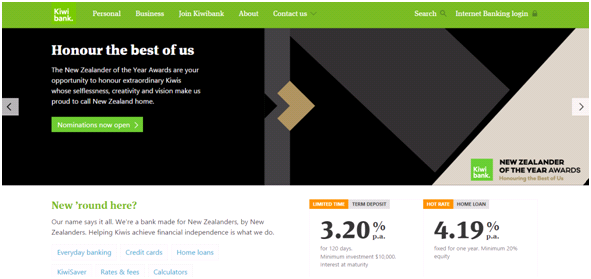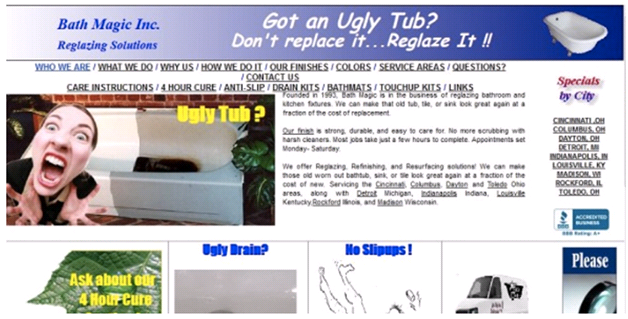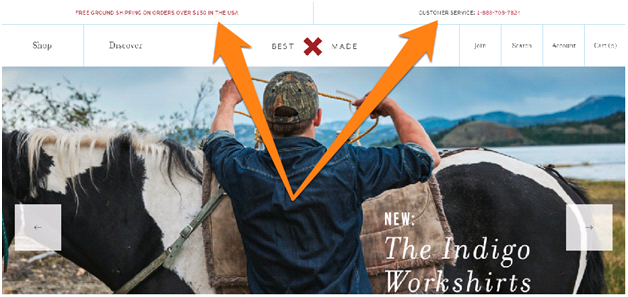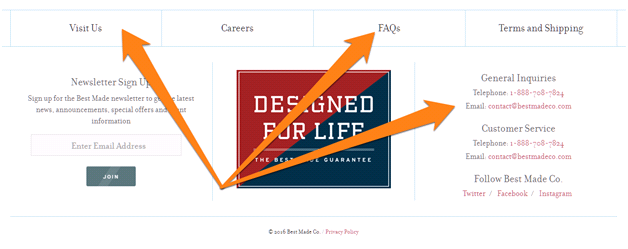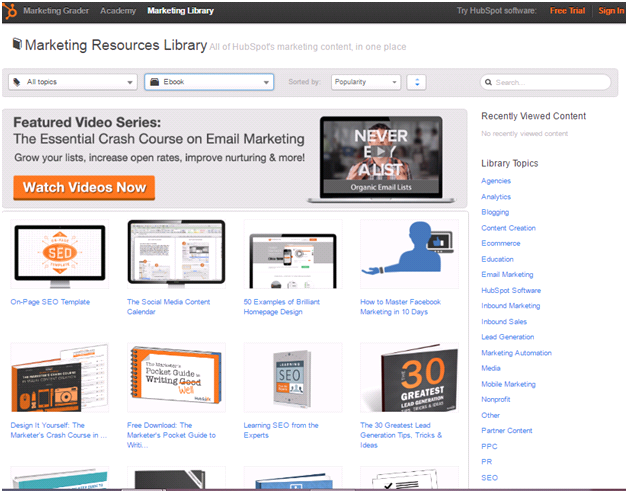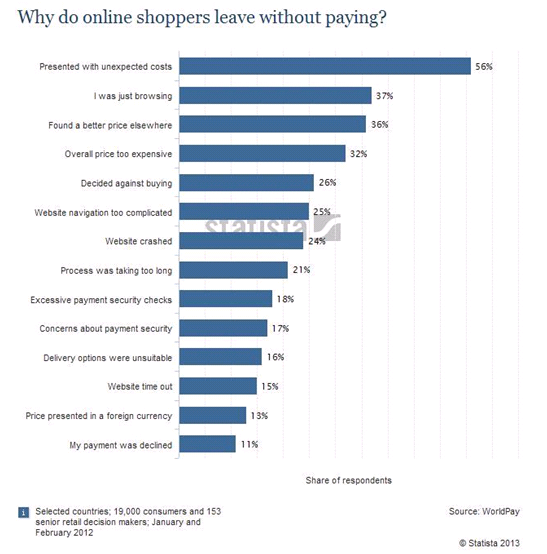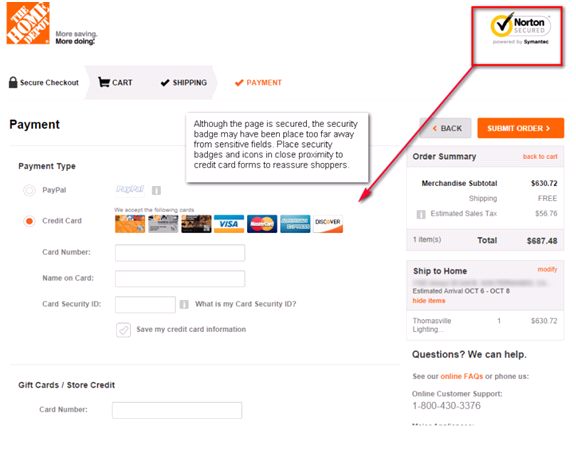
First impressions matter.
According to experiments by Princeton psychologists, it takes less than a tenth of a second to form an impression about a stranger from their face alone.
Colloquially, this is called the “blink test”.
Turns out that the blink test applies to websites as well. Whether your site is seen as trustworthy and credible depends on first impressions. And as per one study, visitors judge your site within 50 milliseconds of landing on it.
Simply put, if your site doesn’t seem trustworthy at any point of their initial experience, they’ll likely turn back and head elsewhere.
To earn your visitors’ trust, make sure you do the following:
1. Follow modern design standards
75% of online users admit that they make judgement about an organization based on their site design.
Why is a well-designed website important?
An aesthetically pleasing site makes it easy for a visitor to determine whether your business is relevant to their needs. If the visitor is reassured that an effort was made from your part, they are likely to believe there is a legitimate business behind this site.
However, if your site looks like it was hacked together in one night, it may appear that you simply don’t care which is a massive red flag.
Consider the following two website and ask yourself, which one are you more likely to shop or provide information to?
Bath Magic Inc
After looking at both websites, you would probably feel more comfortable on KiwiBank than at Bath Magic simply due to the design and simplicity of KiwiBank.
Of course, “improve your web design” isn’t particularly helpful, nor is it very easy to follow.
Based on the example above, here are a few things you can add to any site to make its design more trustworthy:
A. Flat design
Web designers have long eschewed skeuoromorphic design in favor of flat design. As soon as you land on the Kiwibank homepage, you see flat design with modern typography and colors, showing that your site is at least contemporary.
B. Trust-building headline
A series of headlines show customers new promotions and highlight what Kiwibank is all about - crucial if you’re trying to build trust.
C. Clear “contact us” button
Giving customers a quick and easy way to reach you shows that you are a real business and can be reached easily.
D. Company description
The body copy begins by telling new visitors what the site is about. You also get to see live rates for different savings instruments and loans. This upfront information (see below) helps build trust even more.
2. Be upfront
You wouldn’t trust someone who seems to be hiding something from you in real life, would you?
Similarly, people appreciate and trust sites which are upfront with basic details that improve their experience.
For example, prominently displaying contact information, having an in-depth about page, or revealing hidden costs such as shipping charges before billing will make people trust you.
The goal is to make sure your visitor feel as if he or she knows you and your business inside out. Be transparent with this information and make sure it is easy to access.
Take a look at the BestMade website:
Two things are visible as soon as you land on the site:
- A customer care phone number, showing that it’s a real business.
- Shipping rules, so customers don’t waste time shopping for products that won’t be eligible for free shipping.
This is a theme throughout the site. The site footer, for instance, shows the following:
The “Visit us” tab takes visitors to a page where they can actually visit BestMade’s stores and interact with the team - a great way to show that they are a legitimate business.
Highlighting the FAQs not only helps cue customers in but also helps cut down on the number of queries coming in through the “contact” form.
Finally, BestMade offers multiple options to reach it via email and phone, further improving its credibility.
3. Have comprehensive and up-to date content
In-depth content related to your business or niche demonstrates authority and expertise. It communicates to your visitors that you aren’t there just for a quick sell but actually looking to help them address their problems. .
According to a survey by Moz, 53% of consumers say that in-depth content on a topic they’re interested in is useful in attracting their business.
Think of providing a wide variety of content formats relevant and helpful to your customers such as eBooks and how-to-guides.
When people are in search of valuable information and happen to find it for free, it opens them up to other offers you have.
Take a look at Hubspot’s resource page as an example:
By creating a resource library, Hubspot is able to convey to visitors their authority in digital marketing while cementing their brand in their minds.
This applies to B2C brands as well.
Nikon, for example, offers 400+ articles on improving your photography skills. Not only does it help Nikon’s customers improve their output, but it also cements Nikon’s image as a technology leader in its space.
4. Add trust badges to build trust
Remember the holiday season of 2013?
Probably not if you weren’t one of the 40 million Americans who had their credit card information exposed online at the expense of Target.
Due to such repeated incidents like this, shoppers are now more aware of their privacy and security than before. Therefore, you want to ensure that your visitors know that your site is secure, especially if they are going to make a purchase online.
In fact, according to one survey, 17% of respondents said that they abandoned their shopping carts because of concerns over payment security.
One way to mitigate this is by adding trust badges that mention your site is secure through a third-party server.
Check out Home Depot’s checkout page as an example:
Adding Norton’s trust seal establishes credibility and provides reassurance. In fact, the Norton seal is the top ranking trust badge online.
5. Provide authoritative testimonials
With the amount of information being shared online, reviews from external and unbiased sources are taken seriously.
In fact, 88% of consumers are more likely to trust their peers over company-sponsored content.
Generally, the common advice has been to provide social proof such as customer testimonials from peers on your site. However, social proof has been found to be ineffective in swaying people to switch from one brand to another. .
Peer testimonials are not authoritative and trustworthy enough.
However, if Techcrunch or a relevant expert in your field writes about you, then don’t be afraid to prominently display that testimonial. Reviews from already trusted authority figures will make people trust you even with a quick glance.
Here’s an example from Neil Patel’s site Quicksprout
Conclusion
How much your customers trust your site at first glance will determine the kind of relationship you have with them. Whether they come back to your site or become loyal customers will often depend on you proving your site’s credibility.
Follow the five simple steps above to make your site more trustworthy and make a solid first impression.
* * *
Khalid Saleh is co-founder and CEO of Invesp Conversion rate optimization and the first all-in-one growth hacking platform Figpii, an easy to use tool that has everything you need to increase the conversion rate of your website.
- Log in to post comments
Attract new business
Access promotional opportunities to raise your business profile and find new business.

